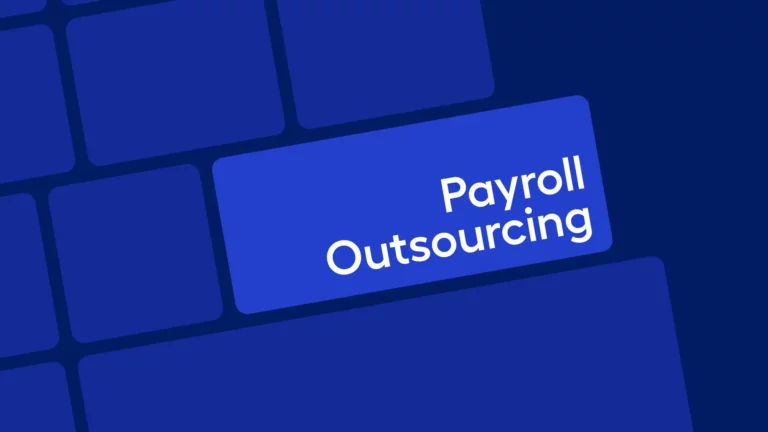HR automation involves digitizing repetitive and time-consuming processes so that HR professionals can focus more on value addition tasks such as employee engagement, leadership development, and business decision-making.
Today, HR managers spend 14 hours a week on tasks that could be automated. By adopting automation, organizations can empower HR professionals, enhance employee experience, and boost business, too.
Automating HR operations forms a critical part of the HR transformation journey in an organization. It helps HR teams fulfill two objectives: “transforming HR operations and transforming workforce and the way work is done,” as reported by Deloitte.
Benefits of automating HR processes
As many as 83% of HR leaders felt HR tech lets them be more flexible and respond to the constantly shifting world of work.
The benefits of implementing automation in HR are many:
1. Improved efficiency
According to SHRM, 85% of companies that use automation save time and improve efficiency.
HR automation tools take over most of the paperwork and repetitive tasks such as resume parsing, scheduling follow-ups, and document verification. This frees up HR professionals so they can invest more time and resources on more complex and creative responsibilities.
2. Reduced errors
HR automation can help reduce errors caused by manual interventions in functions such as onboarding employees and processing payroll. It also prevents data manipulation.
Automated human resources management integrates data streams across HR data systems like performance management, hiring, learning and development, leave and attendance management. This offers a holistic view of the workforce and boosts informed decision-making.
3. Slashed costs
Process automation, as in HR, can let organizations slash operational costs by 30% in five years. By automating HR, teams can save costs in paperwork, correcting errors, and staffing.
4. Improved employee experience
Self-service options on automation platforms give greater control to employees. Digitizing processes boost transparency, collaboration, and accountability among employees. They feel more satisfied and engaged with work, and your employee value proposition improves.
HR automation also shores up your teams worldwide, including remote workers. It lets companies take messages to employees faster and cultivate a cohesive culture.
Similarly, when automation tools take over routine tasks, HR professionals focus on lending a human touch to their practices and building lasting connections with employees. Your employees feel heard and taken care of.
5. Evidence-based decision making
Jean Paul Isson and Jesse S. Harriott suggest human capital decisions will increasingly become a combination of art (human intuition and experience) and science (the intelligence of data analytics).
Automating HR processes integrates data streams across HR functions and helps visualize data to make informed decisions.
You secure real-time insights into workforce trends, employee engagement, or training effectiveness. It not only lets you view the whole picture but allows for predicting trends and prescribing solutions.
6. Better business
Using data and insights extracted from HR software, HR professionals can present a stronger case for HR practices to business leaders.
They can embrace the role of strategic HR.
Firms that reallocate employees in line with strategic plans mostly outperform their peers. Using automation software, you can forecast workforce needs and allocate resources accordingly. The tools may help you spot leadership potential and plan for succession.
7. Better compliance
Automation software boosts your adherence to labor and tax laws. They help you generate contracts, promulgate policies, manage tax withholdings and deposits, and resolve employee grievances.
Some platforms also ensure compliance in different regions worldwide, too, without you having to worry about opening a local entity in a different country.
For example, New York-based Axero Solutions partnered with Multiplier to ensure compliance with local employment and tax laws for its global workforce. This saved the firm 300 hours along with providing worry-free compliance.
8. Scaling partner
HR software helps you plan workforce scaling better. You can onboard employees (permanent or freelancers), run payrolls, manage expenses, and review employee performance anywhere in the world.
You can also scout for the right talent and hire faster to fulfill business needs.
For instance, Singapore-based fintech firm Aspire could expand by tapping into the Indian tech talent market with the support of Multiplier. The EOR solution took care of local onboarding and payment needs, saving Aspire $1 million every year.
HR functions that you can automate
Those are the benefits, but what should be the focus for automation? People analytics expert Josh Bersin believes that automation and AI will dominate the tech stack in 2024: He says, “Every screen, every panel, every interaction you have will be informed and improved and made more intelligent by AI.”
Organizations can automate almost every step of the employee journey from hire to retire, thereby improving the employee experience and relieving the burden on HR professionals.
According to McKinsey, 56% of hire-to-retire tasks could be automated with current technologies.
Here are areas of HR you could automate:
1. Talent acquisition and onboarding
With automation, you can post jobs and track applications on multiple job boards. Using AI, you may screen candidates with suitable skills and experience. HR automation lets you schedule interviews, send automated reminder emails, and record interactions. You may also gamify assessments to gauge candidate potential objectively and reduce unconscious bias.
Automation tools offer options for background checks, verification, and documentation even before a candidate joins the job. HR software also helps combat bias.
For instance, Johnson & Johnson used an AI tool to analyze its job postings, only to realize most job descriptions used a masculine tone, mitigating against a diversity of applications. Using an inclusive tone brought 9% more female applicants.
2. Performance management
Automation of performance management, meanwhile, allows you to specify company, team, and individual goals on HR software and track individual outcomes against them. This allows for alignment across levels and fosters a sense of shared purpose.
On many platforms, you can categorize performers along the bell curve or the 9-box grid matrix, and decide who to reward or promote based on data. HR automation also nurtures a continuous feedback culture and 360-degree reviews.
Few prescriptive models can help identify employee strengths and areas for improvement and generate appropriate growth plans for them.
At Accenture, managers rely on a ‘Performance Achievement’ tool to offer employee feedback. The tool goes over reviews, project deliveries and employee surveys to help spot improvement areas.
3. Payroll management
Automated payroll processing reduces errors that come with manual calculations. Integrations with other HR systems such as attendance and performance management ensure faster and more accurate calculations. Such software also prompts you on upcoming tax filing deadlines.
Further, automated payroll solutions offer self-service to employees to review salary stubs and tax deductions, boosting transparency. They enhance data security and compliance with laws by automatically updating payroll calculations based on recent laws.
4. Time and attendance management
HR software can track time, record breaks and overtime, and link them with payroll. They also simplify leave approval through electronic applications and reviews. Employees can transparently view their leave balance too.
You may integrate attendance-capturing devices directly with HR automation tools with real-time integrations. Remote employees can mark attendance on mobile phones, and you can geo-tag them too.
5. Learning and development
Automation lets you personalize learning for employees. Using AI tools, you can assess their competency gaps and recommend relevant training. HR platforms help you chalk out learning paths based on individual goals and needs.
You can integrate the learning management system with HR software to boost course enrollment, track completion rates, and assess performance. This can boost access to learning among employees.
At IBM, the AI assistant Myca shows employees potential career paths by scanning their CVs, skills and competencies, and achievements. The tool also suggests relevant internal job roles for them, too.
A step-by-step guide to automating HR processes
Starting the HR automation journey can appear daunting for small and medium businesses. However, organizations can reap the benefits of HR automation by following incremental steps, doing phased rollouts, and aligning automation with business goals.
Step 1: Assess need
Organizations considering HR automation must first analyze current HR processes and identify pain points automation could help overcome. They must define the intended outcomes of automation ranging from savings costs to improving employee experience. The goals will help you select the right tool.
They must also identify stakeholders required for the selection, implementation, and scaling up of HR solutions. The primary stakeholder must prepare a business case for adopting HR automation and also come up with a budget.
At this stage organizations must ask themselves:
- What are HR process pain points causing errors and reducing efficiency?
- Can HR automation help tackle them?
- What are the goals for HR automation?
- Does the desired HR automation align with the business goals of the company?
- How does an HR automation strategy fit with the organization’s digital transformation vision?
Step 2: Select suitable software
Emerging technology is making a mark in HR, with artificial intelligence, automation, and chatbot support becoming ubiquitious across businesses of different sizes. However, selecting software based on your business’ needs has to be prioritized.
Explore different HR automation tools in the market that fit your budget and needs. While picking a solution, consider the following factors:
- Ease of use
- Return on investment
- Cost effectiveness
- Scalability
- Integrations with existing systems
- Depth of customization
- Security of data
- Regulatory compliances
- Customer Service
- User reviews
- Fitment with company goals
- Free trials
Step 3: Integrate systems and migrate data
Map data formats to the new system’s structure and migrate data following secure practices. You should rope in HR and IT teams to ensure a smooth transition. Keep contingency measures to tackle any leakages of breach of data integrity during transition. Stay in touch with the vendor’s onboarding team, too.
Step 4: Customize tool and test
Configure the platform to include workflows, approval chains, and data routing. Ensure customization is in line with your HR and IT policies.
Test the software and resolve any teething issues before company-wide deployment. Next, train stakeholders such as HR teams, IT professionals, managers and employees on the use.
Plan for change management and adoption resistance among employees. For this, hold regular stakeholder consultations. Clarify the why, how, and what of the HR automation rollout. Specify how its use will benefit different talent segments uniquely to secure a buy-in.
Step 5: Implement, Monitor and Improve
Roll out the HR automation platform in phases, starting with the least critical business functions. Gather feedback from users and refine the tool before scaling up.
Monitor the performance of the platform and user adoption. To optimally use the software, you must track the following metrics:
- User satisfaction rates
- Adoption rate
- Return-on-investment
- Person hours saved
- Workflow completion rates
- Feature usage
- Cost savings
- Time to implementation
Best practices to combat implementation hurdles
Automating HR management may face teething hurdles that may derail the implementation strategy. Thus, organizations must follow a few best practices to secure desired outcomes:
1. Propose a strong business case
While proposing HR automation to the leadership, present a strong business case. Specify resources required, stakeholders needed, its intended outcome and return on investment, time to implementation, and contingency plans. Suggest a direct impact on the bottom line and visualize proposals to get a buy-in.
2. Build data security
Be compliant with local and international labor and cyber security guidelines, such as GDPR, to ensure hygiene during data migration processing. Include guidelines and best practices relating to HRMS software in your IT policy and appoint Data Security Champions from the IT team.
Be transparent to employees about how the data are processed, by whom, and for what purpose. This will help win the trust of employees and boost adoption rates.
3. Involve all stakeholders
There may be resistance from employees about shifting to HR software or even fear among HR professionals about a threat to their role. In fact, a study in the UK found that although automation replaced 800,000 jobs, it added 3.5 million jobs. The key is continuous upskilling and reskilling to stay relevant.
You must involve different stakeholders in software selection, implementation and improvement to allay fears and boost adoption.
Emerging trends in HR tech
The evolution of technologies is helping automate more repetitive tasks and boosting work fulfillment. Yet, organizations must ensure gatekeeping and human-centricity while implementing decisions influenced by technologies. Here are a few emerging trends in HR technology:
1. Use of AI
Organizations are using artificial intelligence to simplify the employee journey, right from the time of hiring to their offboarding. In fact, McKinsey has listed ‘machine powered’ among the emerging HR operating models. HR heads are seeking to harness deep analytics, AI, and machine learning for better decision outcomes.
Factoid: 56% of companies are using AI in HR to automate repetitive tasks, found Gartner.
Yet, human intervention is necessary while implementing AI in HR to remove bias, safeguard data integrity, and align decisions to business goals.
Deloitte suggests a collaborative approach where “humans define the problems, machines help find the solutions, and humans verify the acceptability of those solutions.”
Elevating hybrid workspaces
HR software is supporting hybrid workers by integrating workplaces and boosting communication through video conferencing and instant messaging. On a unified platform, users can avail of learning and development, performance reviews, payroll stubs and wellness resources.
Predictive analytics
Automation tools are helping bring out workforce trends, employee sentiment, and potential risks. They also help forecast future patterns in data based on analyses of historical data and preempt turnovers, productivity dips, and layoffs.
Global scaling partner
Expanding teams globally can prove a hassle: You need to comply with local laws, deal with bureaucracy, release payrolls in local currencies, and unify workplace culture.
Multiplier is your extended HR team, serving across countries and helping to boost your employee experience in multiple ways:
- Onboard quickly by generating locally compliant contracts for permanent or freelance workers. You may offer competitive benefits on the platform and assign assets like laptops and onboarding kits.
- Run payroll in 120 currencies and get automatically calculated tax deductions and withholdings for compliance with local laws. You may integrate the payroll solution with performance management, time and attendance, and expense systems for accurate calculations. You may set up approval chains and ensure payrolls are released on time.
- Manage expenses and reimbursements on one platform by setting up approval flows.
- Ensure competitive benefits for employees by selecting from a range of insurance packages in different countries. Using the platform, you may grant employee stock options plans to your global workforce too.
Start your HR transformation journey today. Try Multiplier!







